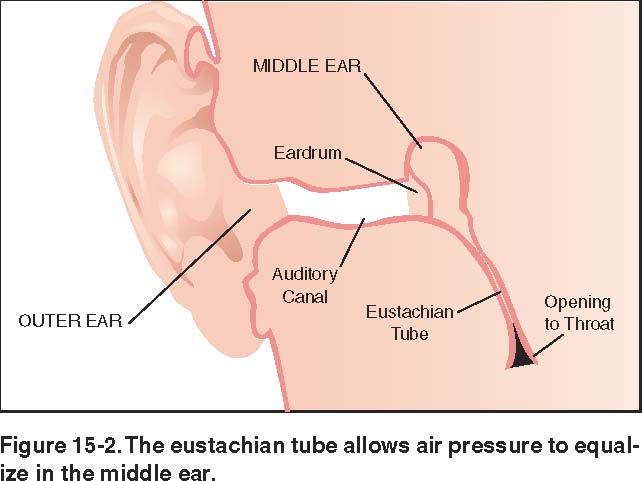What is a Eustachain Tube?
- Posted on: May 9 2012
The eustachian tubes are very small structures within the head that can often cause big problems. In simple terms, the eustachian tube is a very narrow and short mucosa-lined tunnel that connects the back of the ears to the back of the nose. This is the part of the body that needs to open itself up to equalize the pressure with in the ears after diving, going in an elevator, or going on a flight. The inside of the eustachian tube is typically no bigger than the size of a pin, and any slight variations of your overall health such as sinusitis, allergies, or a cold can block the eustachian tube.
In an ideal situation, the eustachian tube should be able to open and close on demand to meet whatever activity you happen to be engaged in and whatever pressure changes are necessary. However, patients suffering from any degree of nasal stuffiness due to recent cold symptoms or sinusitis may have an extra challenge with this. If there is a sudden demand of pressure changes such as a flight, many patients may not be able to pressurize the ears as comfortably as possible.
Additionally, some patients have scarring of the eustachian tube or are otherwise born with a smaller eustachian tube or one that does not respond as effectively. These patients suffer more from symptoms of eustachian tube dysfunction.
If the eustachian tube is not able to pressurize the ear as effectively, patients suffer from sensation of fluid in the ears accompanied with occasional sound of the fluid moving around, as well as issues with reversible type of hearing loss. If the eustachian tube has caused some prolonged period of blockage, the fluid trapped in the ear can otherwise also lead to an ear infection making the symptoms much worse.
The treatment for eustachian tube disorder could involve watchful waiting until the body’s natural immune system mechanisms take over, versus trial of medicines to assist in more rapid decongestion of the eustachian tube, or surgical intervention in the form of myringotomy (making an incision into the ear drum) in order to more expeditiously drain the ears. Patients with a long history of eustachian tube disorder typically could benefit from a long lasting myringotomy tube, called a T-tube, for ongoing drainage.
Tagged with: Ear, ear infection, ear nose throat, ENT, eustachain tube, fluid in ear, Isaac Namdar, Isaac Namdar MD, New York, new york city, Otolaryngology, Otorhinolaryngology, pressure
Posted in: Ears


